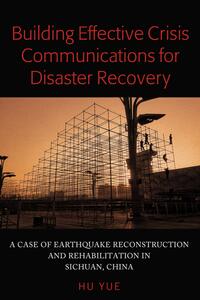
Building Effective Crisis Communications for Disaster Recovery: A Case of Earthquake Reconstruction and Rehabilitation in Sichuan, China reviews and evaluates public relations (PR) campaigns launched by the Chinese government to facilitate long-term disaster recovery after the Wenchuan earthquake in 2008. The Discourse of Renewal (DR) theory is employed to guide the study and explore how the Chinese government utilized communication to help communities recover from disaster and promote community growth. Steered by the co-creational perspective, this book also examines the influence of PR campaigns on the public’s situation awareness, attitude agreement, perceived care and concern, and ultimately the public’s relationship with the Chinese government in renewal. In addition to developing and testing a DR evaluation model, this study investigates the communication obstacles that constrain the effectiveness of DR. In-depth interviews, content analysis, and surveys are conducted to analyze the themes, characteristics, effectiveness, and barriers of the campaigns. The findings of Building Effective Crisis Communications for Disaster Recovery include that (1) DR theory, which has heretofore been developed and applied mainly in Western culture, can inform the study of crisis communication in an Eastern culture, especially in China, (2) DR employed in government campaigns can be very powerful in achieving PR goals in crisis renewal, and (3) imbalanced deployment of campaign resources can affect the outcome of DR. This book also discusses the implications of utilizing these findings to better plan and implement long-term DR campaigns.